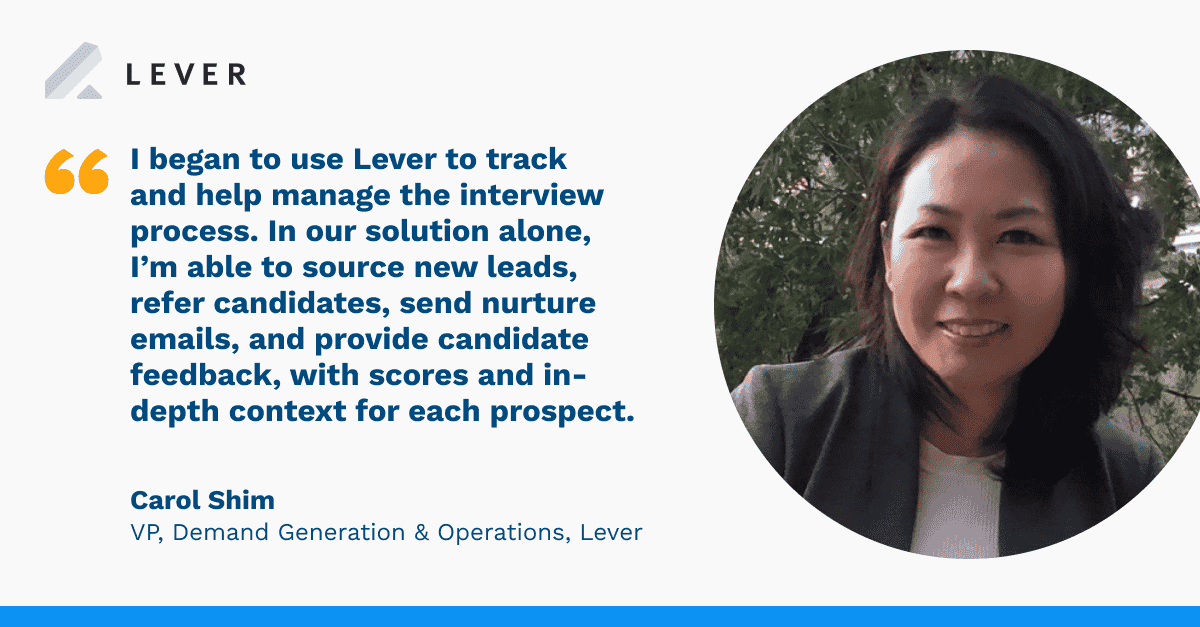The interview process entails many tasks you and your hiring team must tackle together:
- Creating interview kits for panelists (e.g., questions to ask, scoring sheet, resumes)
- Giving candidates an FAQ checklist on what to expect during the interview process
- Selecting the specific types of interviews to conduct by role, team, and/or location
- Scheduling phone interviews (and even in-person interviews, if possible/applicable)
- Conducting background checks on those who make it to the final interview round
By handling these tasks, you ensure your interview process is highly structured and well-coordinated — and, at the end of the day, leads to extending a job offer to the right candidate.
Aside from ensuring your virtual and face-to-face interviews help you hire the ideal people, though, it’s also a good idea for you and your talent acquisition team to focus on the experience both your candidates and hiring managers have during the process.
What the ideal job interview process should look like for both candidates and hiring managers
To give you a sense of what the optimal interview process looks like, Lever VP, Demand Generation and Operations Carol Shim shared some insights — both from her time as a job candidate and as a hiring manager looking to add top talent to her team.
For prospects: Make the great candidates you interview feel comfortable and open
Before joining Lever, Carol was once a candidate we contacted regarding what is now her current role at the company, as her background and experience related to demand generation and marketing operations aligned considerably with our needs.
We were able to quickly and efficiently determine Carol was a strong fit, thanks in large part to Lever’s Google Chrome extension.
Using the extension, our recruiters and hiring managers alike can easily identify top talent and add them to our native TA suite so we can further analyze their LinkedIn profile details and suitability for the DG position.
Once we knew we wanted to speak with her, we got the ball rolling with a personalized email, noting we think she’d be a great fit for the DG role (and why) and asking to talk to her.
“What Lever did well in my interview process was stay in touch with a consistent sequence of emails, phone calls, and texts,” Carol said. “It was clear they had a strong nurture strategy.”
“Throughout each step in the interview process, the lead recruiter kept me up-to-date on my status and sent info regarding next steps, videos and testimonials from employees, and then — when I finally got the role — what to expect during onboarding.”

For hiring managers: Craft good interview questions, consult on hiring decisions
That was one side of the hiring coin. Today, Carol is now charged with hiring for her DG team.
“Now, as a full-time Lever employee, I’ve stepped into the hiring manager role,” Carol stated.
“I began to use Lever to track and help manage the interview process. In our solution alone, I’m able to source new leads, refer candidates, send nurture emails, and provide candidate feedback with scores and in-depth context for each prospect.”
Carol added she’s also able to seamlessly collaborate with other hiring stakeholders.
“From sourcing, to the initial phone screen interview, all the way to the final interview, I’m able to work effectively and efficiently with all others involved in the hiring process,” Carol added.
“Once all feedback has been submitted — in silos, of course, to avoid bias during the recruitment cycle — everyone on the interview panels can each see one another’s notes on candidates and chat about which ones we believe are the best fits for the roles in question.”
Carol said interview panelists often have distinct points of view and thoughts on prospects’ answers to questions posed during each interview process stage. This, she noted, leads to a variety of unique perspectives and helps with the final decision-making.
While Carol has had to make tough choices regarding which individuals to extend offers to and have join her demand gen team, she knows she can always revisit other qualified candidates who were interviewed, thanks to Lever’s archive and tagging capabilities.
“The candidates I did not hire continue to ‘live’ in Lever’s unified talent database,” Carol said.
“That means we can easily resurface folks we considered for past roles and use info we store about them and our prior engagement with them to maintain our relationship with them.”
Download our Structured Hiring eBook to learn how to refine your recruitment process to ensure you provide a stellar candidate experience and hire the right talent.



